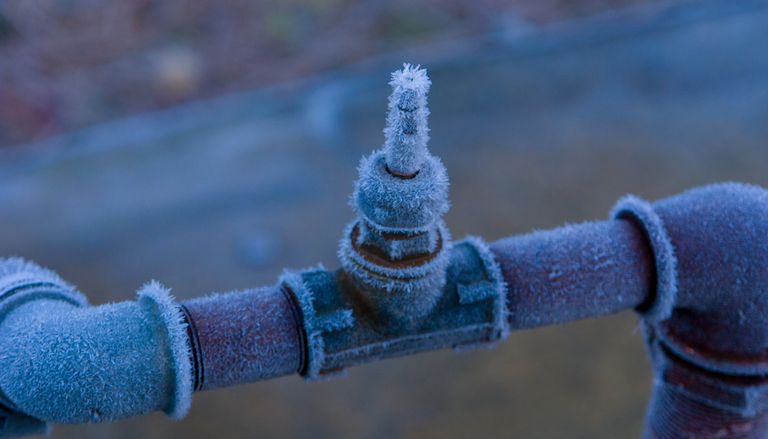Ways to Maintain Your Pipes from Freezing Damage: Important Tips
Ways to Maintain Your Pipes from Freezing Damage: Important Tips
Blog Article
This post down below relating to Helpful Tips to Prevent Frozen Pipes this Winter is extremely compelling. Check it out yourself and see what you think about it.

Winter can wreak havoc on your plumbing, particularly by freezing pipelines. Right here's exactly how to avoid it from occurring and what to do if it does.
Introduction
As temperature levels decrease, the danger of frozen pipes rises, possibly bring about pricey repair services and water damage. Comprehending exactly how to stop icy pipelines is essential for property owners in chilly climates.
Comprehending Frozen Pipes
What causes pipelines to ice up?
Pipelines ice up when subjected to temperature levels listed below 32 ° F (0 ° C) for expanded periods. As water inside the pipes freezes, it broadens, putting pressure on the pipe wall surfaces and potentially triggering them to burst.
Risks and problems
Icy pipelines can result in supply of water interruptions, residential property damage, and costly repair work. Ruptured pipelines can flooding homes and cause considerable structural damage.
Indicators of Frozen Pipeline
Recognizing frozen pipelines early can prevent them from rupturing.
Just how to determine frozen pipelines
Seek decreased water circulation from taps, unusual smells or sounds from pipes, and visible frost on revealed pipelines.
Avoidance Tips
Shielding at risk pipelines
Cover pipelines in insulation sleeves or utilize warm tape to safeguard them from freezing temperatures. Concentrate on pipelines in unheated or external areas of the home.
Heating techniques
Maintain indoor rooms adequately heated up, specifically locations with plumbing. Open up cupboard doors to allow warm air to circulate around pipes under sinks.
Safeguarding Outdoor Plumbing
Garden tubes and outside taps
Disconnect and drain garden tubes before winter season. Install frost-proof faucets or cover outside taps with insulated caps.
What to Do If Your Pipelines Freeze
Immediate actions to take
If you believe icy pipes, maintain taps open to ease pressure as the ice thaws. Make use of a hairdryer or towels soaked in warm water to thaw pipelines slowly.
Long-Term Solutions
Architectural modifications
Consider rerouting pipelines away from outside walls or unheated locations. Include extra insulation to attic rooms, cellars, and crawl spaces.
Upgrading insulation
Buy premium insulation for pipelines, attics, and wall surfaces. Correct insulation helps preserve regular temperatures and minimizes the threat of frozen pipes.
Final thought
Preventing frozen pipes needs positive actions and quick reactions. By comprehending the reasons, indications, and safety nets, home owners can shield their plumbing during winter.
5 Ways to Prevent Frozen Pipes
Drain Outdoor Faucets and Disconnect Hoses
First, close the shut-off valve that controls the flow of water in the pipe to your outdoor faucet. Then, head outside to disconnect and drain your hose and open the outdoor faucet to allow the water to completely drain out of the line. Turn off the faucet when done. Finally, head back to the shut-off valve and drain the remaining water inside the pipe into a bucket or container. Additionally, if you have a home irrigation system, you should consider hiring an expert to clear the system of water each year.
Insulate Pipes
One of the best and most cost-effective methods for preventing frozen water pipes is to wrap your pipes with insulation. This is especially important for areas in your home that aren’t exposed to heat, such as an attic. We suggest using foam sleeves, which can typically be found at your local hardware store.
Keep Heat Running at 65
Your pipes are located inside your walls, and the temperature there is much colder than the rest of the house. To prevent your pipes from freezing, The Insurance Information Institute suggests that you keep your home heated to at least 65 degrees, even when traveling. You may want to invest in smart devices that can keep an eye on the temperature in your home while you’re away.
Leave Water Dripping
Moving water — even a small trickle — can prevent ice from forming inside your pipes. When freezing temps are imminent, start a drip of water from all faucets that serve exposed pipes. Leaving a few faucets running will also help relieve pressure inside the pipes and help prevent a rupture if the water inside freezes.
Open Cupboard Doors
Warm your kitchen and bathroom pipes by opening cupboards and vanities. You should also leave your interior doors ajar to help warm air circulate evenly throughout your home.

I am just very interested by How To Avoid Freezing Pipes and I'm hoping you enjoyed reading our piece. For those who appreciated our post plz do not forget to share it. I praise you for your time. Revisit us soon.
Quote Report this page